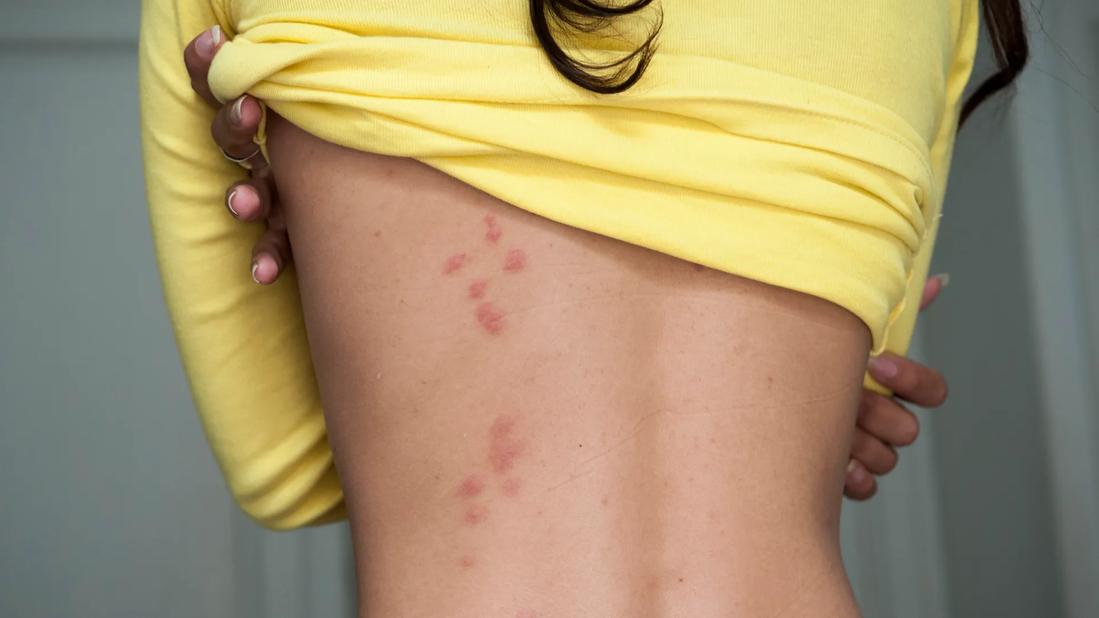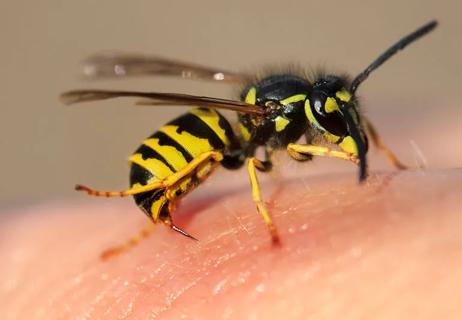These red, raised bites often show up in a zigzag pattern on areas of your skin that come into contact with bedding

Bed bugs, while not dangerous, tend to create panic wherever they turn up. By the time you spot these tiny pests, they’ve likely been there for a while, and serious infestations can be overwhelming — and itchy.
Advertisement
Cleveland Clinic is a non-profit academic medical center. Advertising on our site helps support our mission. We do not endorse non-Cleveland Clinic products or services. Policy
Family practitioner Sarah Pickering Beers, MD, offers pointers on how to identify, treat and prevent bed bug bites.
It can be tough to tell the difference between bed bug bites and other types of bug bites. So, what do bed bug bites look like that sets them apart?
“Bed bug bites can look like any other insect bite, but their positioning on your body will be the main giveaway,” Dr. Pickering Beers says. Flea bites, in particular, look very similar to bed bug bites. But there are a few ways to tell the difference.
Advertisement
Here’s how bed bug bites typically differ from other types of insect bites.
Bed bug bites form raised bumps that can show up in a line or zigzag that may resemble a rash. The bugs can’t bite through clothes or sheets, so you’ll see their bites in places where your bare skin has been in contact with your bed, like your:
If you sleep naked, you can get bed bug bites anywhere on your body.
“Bed bugs are typically nocturnal,” Dr. Pickering Beers says. “They most often get you while you’re sitting or lying down, which is how the bites can happen anywhere on your body.”
Bed bug bites are typically itchy. They can also bring a little bit of pain, discomfort and even a mild burning sensation … but not always.
“Not everyone is affected exactly in the same way,” Dr. Pickering Beers notes. “Sometimes, bed bug bites can mimic hives. And other people don’t show any itchiness symptoms at all, so they just have these little red bumps that don’t itch.”
It’s even possible to have a severe allergic reaction (anaphylaxis) to bed bug bites, but it’s rare and only in cases of a major infestation.
In addition to the way bed bug bites look and where on your body they appear, you may also spot these telltale signs of bed bug activity on your pajamas and bed linens:
“Bed bugs typically only jump onto people when they’re feeding, and the rest of the time, they hide,” Dr. Pickering Beers points out. “So, you’ll often see evidence of them without actually seeing the bugs themselves.”
But adult bed bugs are about the size of an apple seed, so you can spot them with the naked eye — if you know where to find them. They tend to hang out in cracks and crevices of furniture and blankets, like between the cushions of a couch or chair, or between a mattress and box spring.
Advertisement
“You can even get bed bugs from hotels, movie theaters and secondhand items from garage sales and resale shops, like clothing, furniture, linens and fabric-made toys,” she warns. “If there’s an outbreak someplace else in your apartment building, you could even experience an infestation from that.”
If left alone, bed bug bites usually heal on their own within a week. But it’s important to take care of them in the meantime.
To truly get rid of bed bug bites, you’ll have to get rid of the pests that caused them. Otherwise, new bites will pop up as the old ones heal. Start cleaning immediately, vacuuming any place bed bugs might hide and washing your bedding in the hottest water possible. Then, call in reinforcements.
Advertisement
“More than likely, you’ll need to contact a qualified exterminator who can, of course, tell you definitively whether you have bed bugs and discuss your treatment options,” Dr. Pickering Beers says.
Advertisement
Learn more about our editorial process.
Advertisement

Twice daily tick checks, the right bug sprays and long pants can help you prevent tick-borne diseases

Using insect repellent, covering up and keeping your property dry can help keep the buggers at bay

Kissing bugs are insects that can carry a dangerous parasite that causes Chagas disease

Whether you scrape or pull out the stinger, the key is to do it quickly

Some bites are nothing more than itchy — others can put you at risk for disease

They may seem cute, but toxins released by certain kinds of caterpillars can leave you feeling itchy or worse

Using blunt-tipped tweezers, pull the critter up gently to remove it from your kid’s skin and then bag it to take to a healthcare provider for identification

If stung, removing the stinger quickly is key — then, apply a cold compress to soothe

If you’re feeling short of breath, sleep can be tough — propping yourself up or sleeping on your side may help

If you fear the unknown or find yourself needing reassurance often, you may identify with this attachment style

If you’re looking to boost your gut health, it’s better to get fiber from whole foods